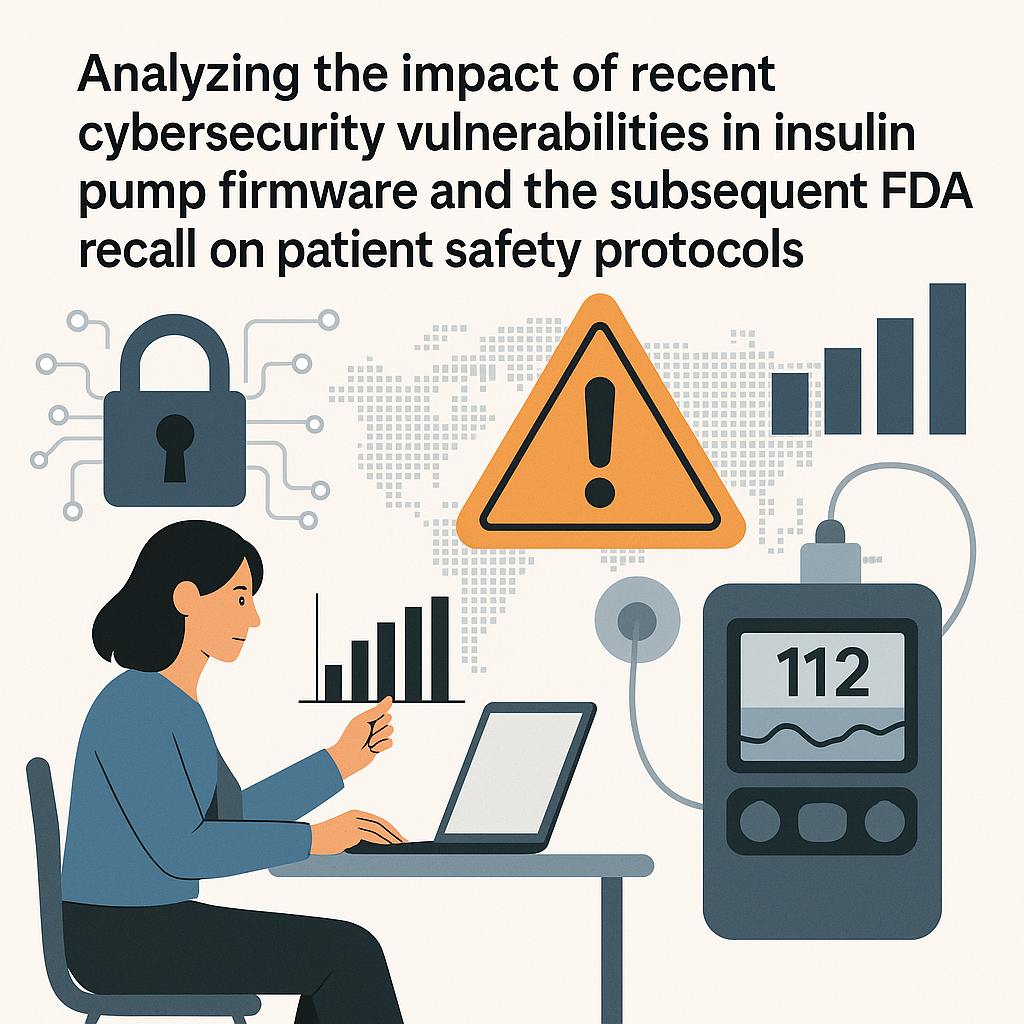Introduction
In recent months, the healthcare industry has faced significant challenges stemming from cybersecurity vulnerabilities in medical devices, particularly insulin pumps. These vulnerabilities pose serious risks to patient safety, leading to a recall by the FDA. This blog post will analyze the implications of these cybersecurity issues, the FDA’s response, and the impact on patient safety protocols.
Understanding the Vulnerabilities
Insulin pumps are critical devices for patients with diabetes, providing continuous insulin delivery to manage blood glucose levels. However, recent findings have revealed vulnerabilities in the firmware of several popular insulin pump models, leading to potential risks such as:
- Unauthorized Access: Hackers could gain access to the device and alter insulin delivery settings.
- Data Breaches: Personal health information (PHI) stored in the device could be accessed or stolen.
- Device Malfunction: Interference with the device’s functionality could lead to incorrect dosing, resulting in serious health risks.
The FDA’s Response
In light of these vulnerabilities, the FDA acted swiftly to protect patients. The key actions taken include:
- Recall Notices: The FDA issued recalls for affected insulin pumps, urging patients to discontinue use immediately.
- Guidance for Manufacturers: The agency provided recommendations for improving cybersecurity measures in medical devices.
- Increased Surveillance: The FDA has ramped up monitoring of medical devices to identify vulnerabilities more quickly in the future.
Impact on Patient Safety Protocols
The recall of insulin pumps due to cybersecurity vulnerabilities has significant implications for patient safety protocols. Here are some key areas affected:
1. Patient Awareness and Education
Patients must be informed about the risks associated with their devices. This includes:
- Understanding the potential vulnerabilities of their insulin pumps.
- Staying updated on recalls and safety alerts from manufacturers and the FDA.
- Learning how to secure their devices against unauthorized access.
2. Healthcare Provider Training
Healthcare providers play a crucial role in patient safety. To ensure they are equipped to handle these risks, training should cover:
- Identifying vulnerabilities in medical devices.
- Appropriate responses to device recalls and patient inquiries.
- Best practices for educating patients about device security.
3. Device Upgrade and Replacement Protocols
As technology evolves, the need for upgraded devices becomes paramount. This requires:
- Regular assessments of the devices used by patients.
- Protocols for replacing or upgrading devices that are outdated or compromised.
- Partnerships with manufacturers to ensure timely updates and patches are applied.
4. Stronger Cybersecurity Measures
To mitigate future risks, both manufacturers and healthcare providers must implement stronger cybersecurity measures, such as:
- Incorporating more robust encryption methods in device firmware.
- Regularly updating software to patch vulnerabilities.
- Establishing incident response plans for potential breaches.
Conclusion
The recent cybersecurity vulnerabilities in insulin pump firmware highlight a critical intersection between technology and patient safety. The FDA’s proactive response underscores the urgency of addressing these vulnerabilities to protect patients. As the healthcare landscape continues to evolve, it is crucial for both patients and providers to remain vigilant and informed. By enhancing education, training, and cybersecurity protocols, we can work together to ensure the safety and well-being of individuals relying on these essential medical devices.



